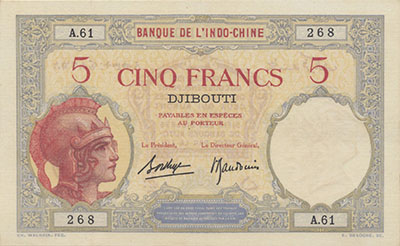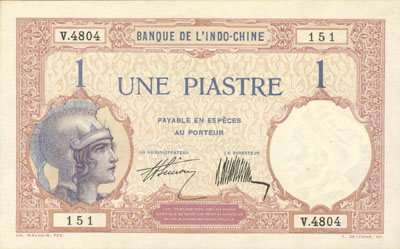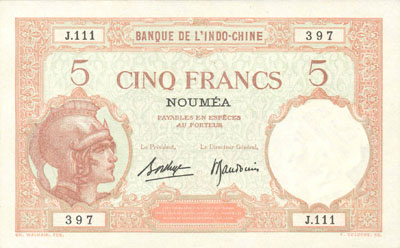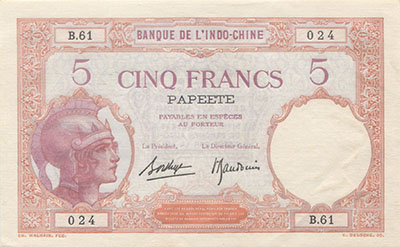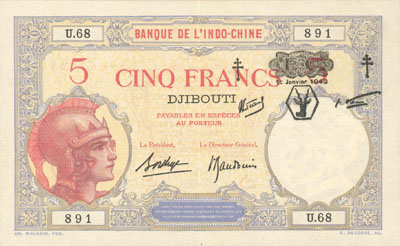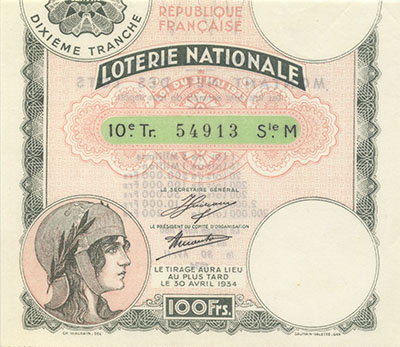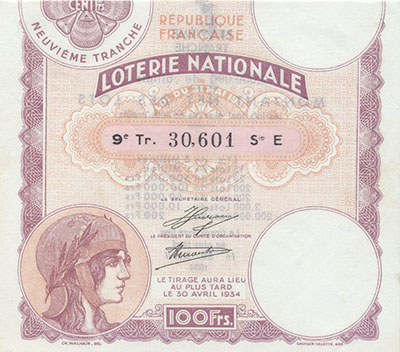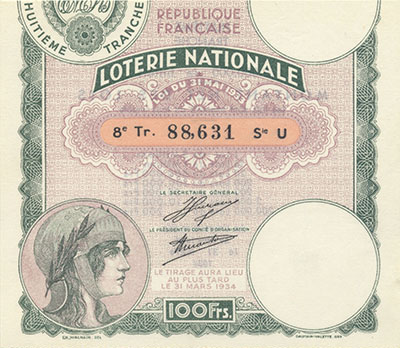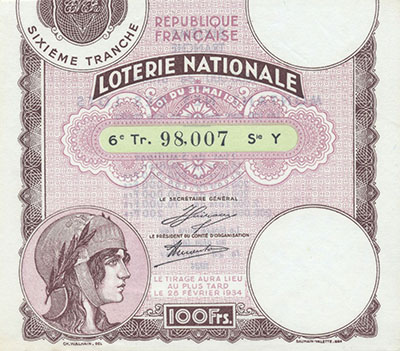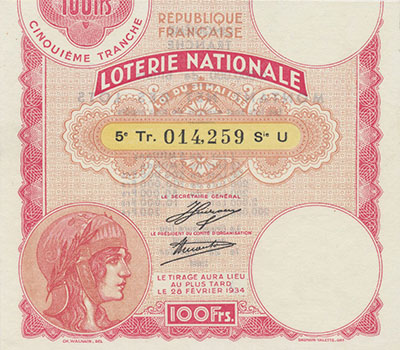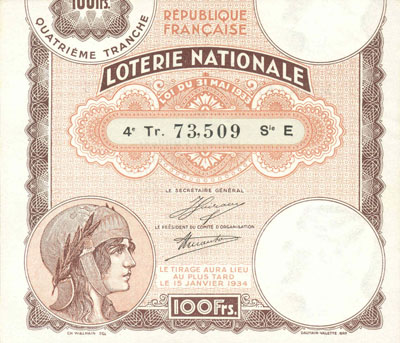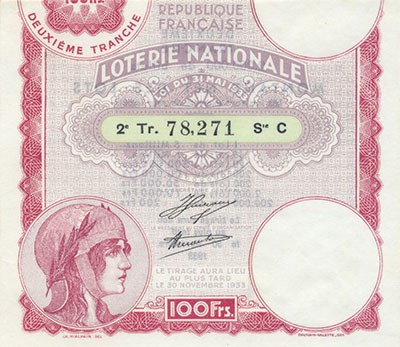Marianne de Walhain

Marianne has been the symbol of France since the French Revolution of 1789-99. She represents the Republic of strong proud people. During peaceful times, she is shown as a peasant woman with Phrygian cap, and during wartime she is a more aggressive woman in battle dress. Many artists have created their renditions of Marianne, and she remains a part of France's culture as well as her art.
Charles Walhain designed a vignette of such a woman, used on French banknotes during the first and second world wars.
Marianne in War and in Peace
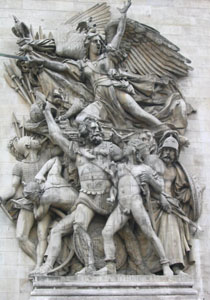
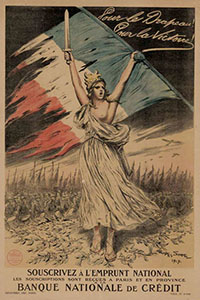
"La Marseillaise" on the face of the Arc de Triomphe in Paris, is one of the most familiar allegories of Marianne. Created by sculptor François Rude, she is shown as a warrior voicing the Marseillaise and leading the volunteer French army in the Revolution.
The poster to the right, and many others like it, were issued by banks to encourage the purchase of war bonds during WWI. It shows Marianne leading the French army, with olive branches at her feet. Behind her is the French flag with the inscription “For the Flag! For Victory!”
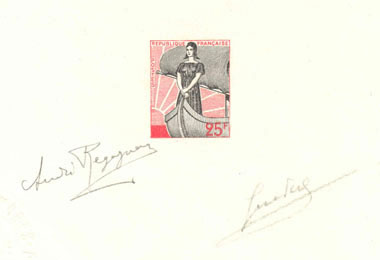
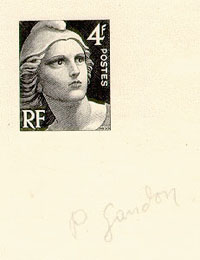
Since 1944, France has produced a series of Marianne definitive stamps. There is quite a popular competition every decade or so, for the right to provide the art for the next stamp. The chosen designs definitely show Marianne as a strong young woman during more peaceful times.
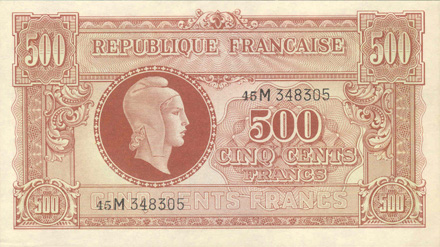
Walhain's Marianne
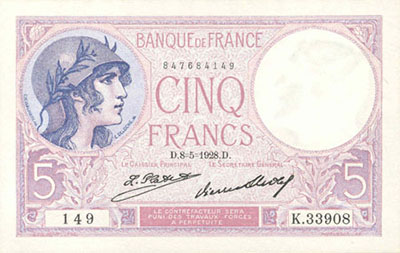

Charles Walhain’s Marianne, engraved by the prolific Emile Deloche and printed by Banque de France, was first seen on the French 5F Violet banknote dated from Dec 1, 1917 through Sept 14, 1933. The note was first put in circulation Oct 4, 1918. While she is called a "Helmeted Woman" or "Allegory of France" rather than "Marianne" in the catalogs2, I see no reason for this exclusion from her peers. She is a strong woman in wartime dress, created during WWI as an allegory of France. She is one of only two Marianne allegories to appear on French banknotes, the other being that of Edmund Dulac shown above.
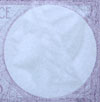
The watermark on this banknote is the bust of the young man from Rude's Marseillaise.
Walhain also designed the back of this note, with a dockworker carrying a sack over his shoulder, climbing a ladder with boats in the background.
Banque de l'Indochine
A second Walhain banknote with the Marianne vignette, again engraved by Deloche, was printed by Banque de France and issued by the Banque de l’Indochine during the 1920's. In this design, Marianne is wearing a new helmet and her hair is slightly different.
The note was used in French Indochina, and overprinted for Djibouti, Papeete (Tahiti) and Nouméa (New Caledonia). It was printed in different colors for each country.
A 1 Roupie banknote using the same vignette was issued in French India, first in 1920 then again in 1923 with slight variation. It is quite rare in any condition.
Wartime Overprints
After the fall of France to Germany in 1940, there was a period of precarious balance where both the German-aligned Vichy regime of Philippe Pétain and Charles De Gaulle's Free French attempted to gain control of the French Overseas Territories3.
On August 31, 1941, the Governor of New Caledonia directed that all banknotes used in New Hebrides, including the Walhain note, would be overprinted “France Libre” and old notes were quickly removed from circulation 2. The overprint included the Cross of Lorraine and an island scene with beach and palm trees.
On January 1, 1943, the Walhain note of Djibouti was also overprinted to acknowledge Free France alignment. This overprint includes a double cross of Lorraine, the Somali head of antelope, signatures, and and the initials "F.C." for "France Combattante" (Fighting French).
Lottery
Walhain's Marianne also appeared on French lottery tickets in 1933 as France reinstituted its state lottery to collect needed revenue. All that remains of the original banknote design is the Marianne vignette of Charles Walhain, this time again with a different helmet. These lottery tickets were engraved by Daumain & Valette, and issued in a variety of colors. They are dated "Loi du 31 Mai 1933" and serial numbered with part (tranche) numbers and letters for the series.
I hope this article has provided you with an appreciation for Marianne's role in French culture, and of Walhain's representation of her in his vignette.
